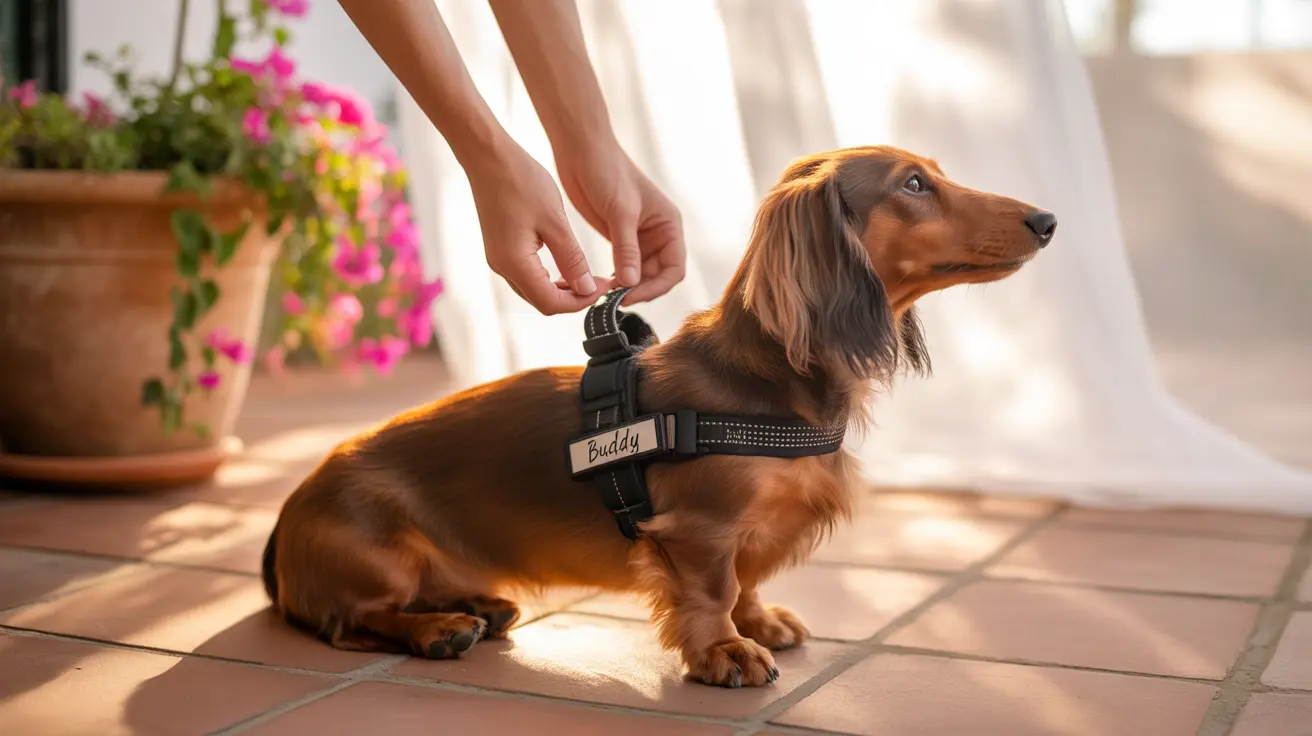Putting on a dog harness correctly is essential for your pet's safety and comfort during walks. Whether you're new to using a harness or switching styles, understanding the proper technique can make the process smoother for both you and your furry friend. This comprehensive guide will walk you through the different types of harnesses and provide clear instructions for proper fitting.
From standard overhead harnesses to step-in designs, each style requires a specific approach for proper application. We'll cover everything you need to know about securing your dog's harness correctly, including helpful diagrams and expert tips for a perfect fit.
Understanding Different Harness Types
Before diving into the fitting process, it's important to understand the main types of harnesses available:
Standard Overhead Harness
This common design features a loop for the neck and one for the ribcage, with a D-ring on the back for leash attachment. It's ideal for most dogs and everyday walks.
Step-in Harness
Perfect for dogs who don't like things going over their heads, this style allows your pet to step into leg holes before securing it over their back.
Front-Clip and Back-Clip Options
Front-clip harnesses help control pulling, while back-clip versions work well for trained dogs who walk calmly on leash.
Step-by-Step Fitting Instructions
For Standard Overhead Harnesses
- Lay the harness flat and identify the neck and chest loops
- Slip the neck loop over your dog's head
- Guide their leg through the first opening
- Bring the chest piece under their belly
- Secure all buckles and adjust the straps
For Step-in Harnesses
- Place the harness flat on the ground
- Guide your dog's front legs into the designated holes
- Pull the sides up around their body
- Fasten the buckles on their back
- Check and adjust the fit
Ensuring Proper Fit
A properly fitted harness should allow two fingers' width between the harness and your dog's body. Key areas to check include:
- Around the neck
- Behind the front legs
- Across the chest
- Around the ribcage
Common Fitting Mistakes to Avoid
Watch out for these frequent errors when fitting your dog's harness:
- Leaving the harness too loose
- Over-tightening the straps
- Twisted straps
- Incorrect D-ring placement
Frequently Asked Questions
How do I correctly put on a standard dog harness with a clear diagram?
Position the harness with the D-ring on top, slip it over your dog's head, guide their leg through the first opening, and secure the buckles around their chest. Follow the manufacturer's diagram for specific placement points.
What is the easiest way to put on a step-in dog harness for nervous dogs?
Place the harness flat on the ground, encourage your dog to step into the leg holes with treats, then lift the sides up and secure the buckles on their back. Keep the process calm and positive.
How can I adjust a dog harness to ensure a snug but comfortable fit?
Use the two-finger rule: you should be able to slip two fingers between the harness and your dog's body. Adjust all straps evenly and check the fit around all contact points.
What are the key differences in fitting front-clip vs. back-clip dog harnesses?
Front-clip harnesses require careful chest strap positioning to ensure the clip sits centered on the chest. Back-clip harnesses need proper D-ring placement between the shoulder blades.
Where is the D-ring located on different types of dog harnesses, and why does it matter?
On back-clip harnesses, the D-ring should sit between the shoulder blades. Front-clip harnesses have the D-ring centered on the chest. Proper placement ensures effective control and comfort during walks.
Remember, taking the time to properly fit and adjust your dog's harness will ensure safe, comfortable walks for both you and your pet. If you're unsure about the fit, consult with a professional or your veterinarian for guidance.






